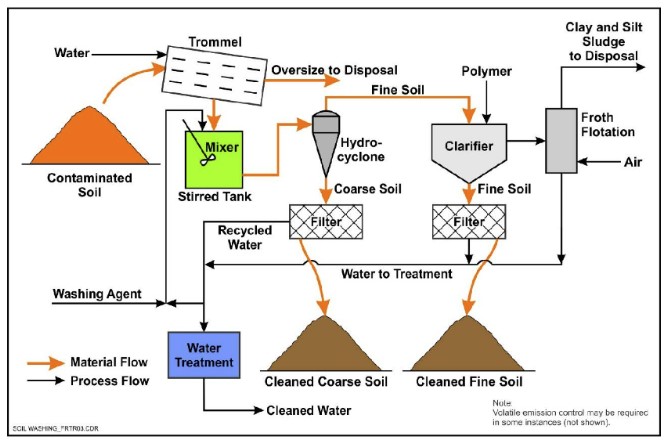Advanced Methods for Reliable PFAS Contamination Removal
The persistent obstacle of PFAS contamination necessitates the exploration of innovative removal techniques that can effectively attend to these damaging compounds. Innovative modern technologies, such as innovative oxidation processes and various adsorption strategies, have actually emerged as promising options in mitigating PFAS from influenced atmospheres.
Understanding PFAS Features
Although per- and polyfluoroalkyl compounds (PFAS) have actually been widely made use of in different commercial and customer products because of their distinct residential properties, their perseverance in the environment poses substantial challenges to public wellness and safety. PFAS are a group of artificial chemicals characterized by a carbon-fluorine bond, among the greatest chemical bonds understood, which adds to their exceptional stability and resistance to degradation. This stability allows PFAS to gather in the setting and living microorganisms, bring about possible negative health results.
These same buildings contribute to their environmental perseverance, as PFAS do not conveniently break down with natural processes. Comprehending the chemical properties of PFAS is crucial for creating effective approaches to handle and minimize their environmental influence.
Innovative Remediation Technologies
The determination of PFAS in the atmosphere has actually spurred the development of cutting-edge removal modern technologies targeted at successfully removing these pollutants from affected environments. Among the most appealing methods are advanced oxidation procedures (AOPs), which utilize effective oxidants to damage down PFAS substances into much less unsafe compounds. AOPs can be customized to target particular PFAS frameworks, improving their effectiveness.
Another arising technology is the usage of adsorption media, such as activated carbon and ion exchange resins, which can uniquely capture PFAS from contaminated water. These products have revealed substantial removal performances, although periodic substitute and regrowth are needed to maintain performance.
Membrane filtering methods, consisting of reverse osmosis and nanofiltration, are likewise acquiring grip in PFAS remediation. These techniques can successfully divide PFAS from water, supplying a practical remedy for dealing with contaminated resources. Furthermore, thermal therapy methods, such as incineration, can break down PFAS right into safe by-products, though they call for mindful management to control exhausts.
Collectively, these ingenious remediation modern technologies stand for substantial developments in the ongoing fight against PFAS contamination, using different approaches to restore affected settings and secure public health.

Bioremediation Methods
Bioremediation techniques supply an encouraging strategy to attending to PFAS contamination by harnessing the natural abilities of microbes to degrade these consistent compounds (m270 waste management). This technique includes making use of microorganisms, fungi, and other germs that can metabolize or change PFAS compounds right into less unsafe byproducts
Current improvements in molecular biology and environmental microbiology have actually boosted our understanding of microbial areas and their possible functions in PFAS destruction. Scientists are proactively checking out specific pressures of bacteria, such as Pseudomonas and Bacillus, which have actually demonstrated the capability to break down particular PFAS substances.
Sitting bioremediation techniques, where bacteria are stimulated straight in polluted environments, can be specifically effective. This method typically includes the application of nutrients or electron donors to promote microbial development and task. Furthermore, ex-spouse situ methods, such as bioreactors, enable for regulated conditions that can optimize destruction prices.
Despite the promise of bioremediation, challenges remain, consisting of the complex nature of PFAS substances and the need for comprehensive area testing - m270 waste management. Proceeded research study and growth will certainly be vital to refine these methods and assess their performance in varied environmental contexts
Adsorption and Filtering Methods
Attending to PFAS contamination often includes utilizing adsorption and filtration approaches, which are designed to eliminate these consistent chemicals from water and soil. Among the numerous strategies, triggered carbon adsorption is commonly made use of due to its high surface and porosity, allowing reliable capturing of PFAS molecules. Granular turned i thought about this on carbon (GAC) systems are particularly preferred for dealing with huge volumes of try this infected water, while powdered triggered carbon (POLITICAL ACTION COMMITTEE) can be used for smaller-scale applications.
Ion exchange materials likewise reveal promise in PFAS removal, working by trading PFAS ions with much less damaging ions in the water. This method has actually shown effectiveness in concentrating PFAS compounds, promoting their succeeding removal. Furthermore, membrane purification strategies, such as reverse osmosis and nanofiltration, run by making use of semi-permeable membranes to different PFAS from water, properly reducing their concentrations.
While these methods work, they need to be thoroughly selected based upon the certain PFAS compounds existing and the ecological context. Continual developments in products scientific research and engineering are resulting in the development of unique adsorbents and purification systems that boost removal effectiveness and lower functional prices, thus enhancing general removal efforts.
Regulatory and Plan Factors To Consider
Just how can effective governing frameworks improve the administration of PFAS contamination? Detailed plans are important to guarantee a collaborated and durable reaction to the challenges presented by per- and polyfluoroalkyl substances (PFAS) Rules can establish clear guidelines for surveillance, reporting, and remediating PFAS-contaminated websites, cultivating accountability among markets and public entities. (m270 waste management)

On top of that, financial motivations and gives can be incorporated into plans to urge the fostering of sophisticated remediation modern technologies. Policymakers ought to additionally prioritize r & d, making certain that arising techniques for PFAS removal are validated and applied effectively.
Additionally, public awareness and engagement are crucial parts of any kind of regulative strategy, empowering neighborhoods to support for their health and wellness. Eventually, a well-structured governing setting will certainly not just improve the management of PFAS contamination however additionally advertise lasting methods that secure future generations.
Final Thought
In summary, the intricacy of PFAS contamination demands the adoption of innovative remediation methods. Continued research and advancement in this field continue to be vital to resolving the difficulties positioned by PFAS contamination.